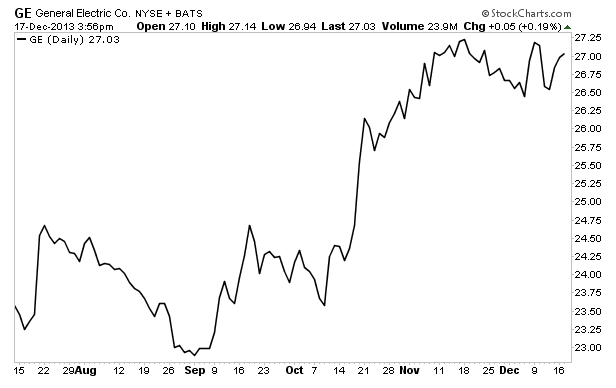General Electric (NYSE: GE) has taken its share of knocks over the years for lacking vision and its focus on short-term performance.
That said, I'm convinced that the $270 billion-plus company that used to 'bring good things to life' is coming back to life...with a vengeance.
Changes are happening rapidly at GE as the company gets smarter. After saying good riddance to its dead or dying segments over the past couple years -- insurance, NBC, plastics and subprime lending operations, in addition to its commitment to further reduce GE Capital -- GE has shifted its focus to the Industrial Internet.
It's a new era that could contribute as much as $15 trillion a year to the global economy by 2020, and GE is emerging as a key player.
I'm not talking about futuristic technology that may not see the light of day for decades. This is about machines and people coming together today to connect billions and billions of smart sensors and devices that can manage large-scale industrial machines in the cloud.
GE has engineered the platform for doing so and made two dozen technologies available for aviation, health care, rail, energy industries and others that help eliminate hundreds of billions of wasted dollars a year on inefficiencies.
According to Harbor Research, the Industrial Internet is expected to generate $353 billion in revenue next year, and future growth is forecast at three times the rate of traditional maturing IT and network infrastructure technologies (about $3.8 trillion in 2013). Much of the growth can be attributed to the increasing demands of modern society in areas such as the adoption of pervasive technology, environmental policy, health care, national security and transportation infrastructure.
GE has been fortifying its energy management team with strong partners. The company formed a joint venture with XD Electric, a major Chinese infrastructure provider, in May 2012 and invested more than a half-billion dollars. GE also acquired FMC Tech in May 2011, British Remote Energy Monitoring in January 2011, and SNC-Lavalin's Energy Control Systems, bolstering its portfolio in medium-voltage sensors, metering and network control systems.
Industrial-smart GE has also partnered with Trilliant, Itron (Nasdaq: ITRI), Google (Nasdaq: GOOG) and a few other companies you might recognize to round out its industrial muscle: Intel (Nasdaq: INTC) has processor and management tool duty; AT&T (NYSE: T) provides the Internet service, and Cisco (Nasdaq: CSCO) software helps tackle Big Data.
GE may have fallen behind the industrial sector and broad market for the past decade, but with higher profit margins and lower operating costs on the horizon, it's in a position to make up a great deal of ground in 2014.

It's not the kind of stock you'll boast about to your friends, but not many investments can match GE for long-term value and capital appreciation. Trading at $27, its forward price-to-earnings (P/E) ratio stands at 15.5, and analysts forecast a 30% increase in the share price over the next two years. The 2.8% dividend makes GE even more appealing.
Whether you know GE as the company that 'brings good things to life' or by its current 'Imagination at Work' slogan, this is not the same one that stumbled over the past 10 years.
Though Warren Buffett trimmed back his investment in GE after the recession, he has since added $260 million of what he deems a 'buy and hold forever' stock.
GE is by no means 'dead money,' as many financial gurus have labeled it. On the contrary, an investment in GE could keep many portfolios alive and kicking for years to come.
Risks to Consider: The only downside I see is for traders. This is a stock for those who invest by the adage 'slow and steady wins the race.'
Actions to Take --> An investment in GE in 1962 would have returned nearly 3,300%. Buy GE before it fully embraces the Industrial Internet -- and in a couple of decades, pass your shares along to your grandchildren to hold.



